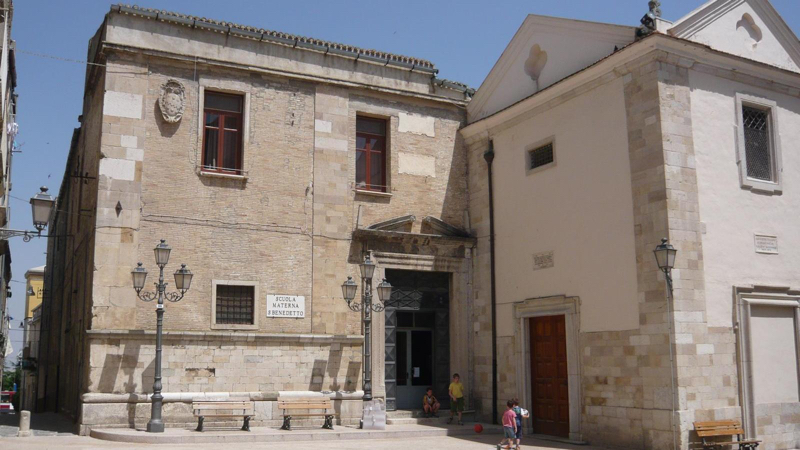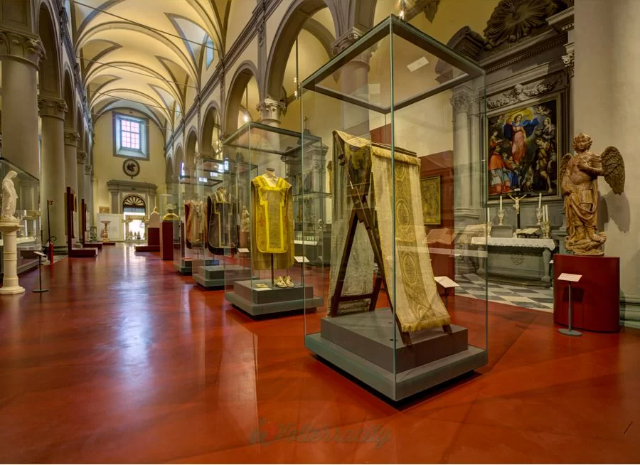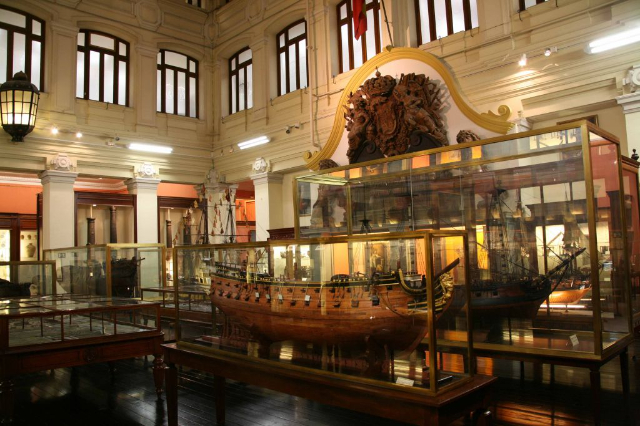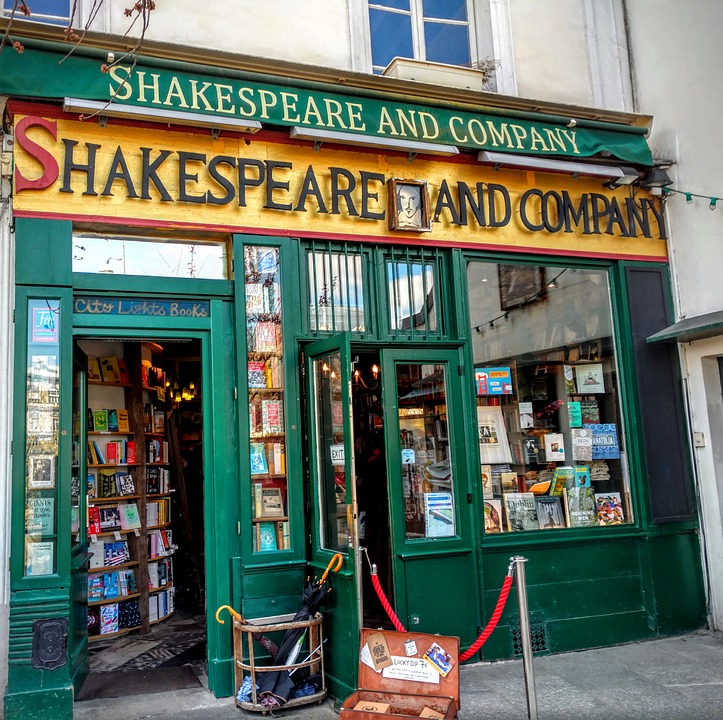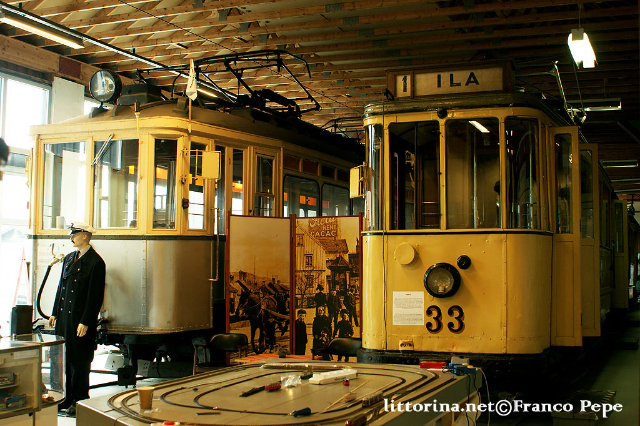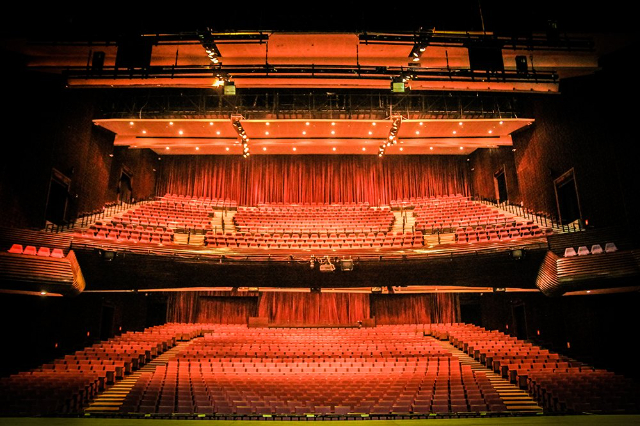Among the most beautiful non-religious structures is the Diocesan Museum, located in the Benedictine Monastery.
The Diocesan Museum occupies the ground floor of the former Monastery of St. Benedict, first "Monastery of the SS. Nunziata of the Benedictine order, then Monastery of the Benedictine". It was Monsignor Felice Siliceo, vicar general of Bishop Giacomo Aldobrandini (1592-1607) who had it built to give the Benedictines a more comfortable and decorous accommodation. The construction dates back to 1605. Two epigraphs are set in the facade. The one above reads: JACOBI ALDOBRANDINI EPISCOPI TROIANI ET IN REGNO NEAPOLITANO NUNTII APOSTOLICI; CIVIUMQUE MUNERE AC PIETATE AD DEI CULTUM ET REIPUBLICAE COMMODITATEM PRO SACRIS VIRGINIBUS DEIPARAE DICATUM A(nno) D(omini) MDCV (trad.T. Maddalena: With the offerings and devotion of the Citizens and Giacomo Aldobrandino, bishop of Troia and apostolic nuncio in the Neapolitan Kingdom dedicated to the Mother of God for the worship of God and for the public utility of the citizens in favor of the Holy Virgins – in the year of our Lord 1605); the other, placed lower, says: OPUS LONGE ANTE DESIDERATUM DIVINA ORE TANDEM INCOEPTUM AT FELICIS SILICEI ARCHIDIACONI TROJANI OPERA CELERITER ABSOLUTUMDUM GENERALIS VICARII TROJANI OFFICIO FUNGERETUR (translated. T. Maddalenena: Work long desired, finally begun by divine will and quickly completed by Felice Siliceo, archdeacon of Trojan, while he was carrying out the office of Vicar General of Troy).
The facade was overshadowed in good part by the adjacent church of San Benedetto (today of the Vergine Addolorata or of San Francesco delle stimmate), built by Monsignor E. G. Cavalieri (1694-1726) to give the nuns the possibility to attend the liturgies from the top of narrow windows with grates.
The present and temporary entrance to the museum has a portal enriched with floral decorations and a broken tympanum. One enters the monastery through an armored service door and immediately to the visitor’s eyes appears a blindingly white cloister with slender pillars on which the arches rest.
Inside the cloister there are interesting examples of bronze sculptures, seventeenth- and eighteenth-century paintings and marble complexes. The silence and tranquility of the rooms, which alternate geometrically one after the other according to the traditional structure of the cloisters, give the visitor a sense of tranquility and peace, which makes the visit to the museum very pleasant.
Each room has its own name: the Mysteries Room, the Annunziata Room, and sometimes they host exhibitions and conferences on art themes. Do not miss the Swabian capital, whose twin is located at the "Metropolitan Museum" overseas. Not far from the structure there is also the Municipal Museum, set up in 1971 and hosting, in five sectors, works ranging from medieval to modern to contemporary art. Among the most interesting pieces of the collection are the Tomb of Aeneas, the Sarcophagus of San Secondino, and part of the original flooring of the Via Traiana, as well as a vast treasure of silverware.
